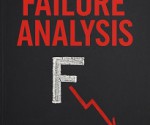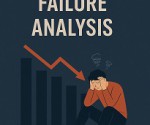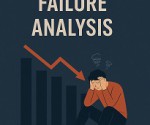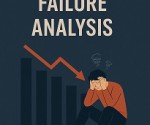CGPSC Main Exam Notes
CGPSC Main Exam Notes
FREE DOWNLOAD
QUESTION PAPER IV (SCIENCE, TECHNOLOGY & ENVIRONMENT)CGPSC MAIN EXAM 2013
QUESTION PAPER-01
Language
(Marks 200, Duration 3 hours)
You will get:
- Study Material
- Mock Test Papers ( 20 tests, Most important expected questions)
- Model Answers (Updated, well researched and comprehensive Study Material)
- English/HINDI medium
FEE: Rs 3000/-
QUESTION PAPER -02
Essay
(Marks: 200, Duration- 3 hours)
Candidates will have to write two essays on problems (Reason, present status including data and solution) from each section. Three problems will be given in each section; candidate will have to write essay on each section about 1500 words. Each section will carry 100 marks.
Section I : Problems of National level
Section II : Problems relating to the State of Chhattisgarh
You will get:
- Study Material
- Mock Test Papers ( 20 tests, Most important expected questions)
- Model Answers (Updated, well researched and comprehensive Study Material)
- English/HINDI medium
FEE: Rs 2000/-
QUESTION PAPER – 03
History, Constitution and Public Administration
(Marks 200, Duration 3 hours)
You will get:
- Study Material
- Mock Test Papers ( 20 tests, Most important expected questions)
- Model Answers (Updated, well researched and comprehensive Study Material)
- English/HINDI medium
FEE: Rs 3000/-
SECTION 01 – HISTORY OF INDIA -
Indus Civilization, Vedic Civilization, Jainism and Buddhism, Rise of Magadh Empire, Mauryan Polity and Economy, Gupta Empire, Development of Art, Architecture, Literature & Science In Gupta-
Vakataka Period. Bhakti Movement, Sufism, Growth of Literature in regional Languages, Vijaya Nagar Kingdom, Rise of Marathas, Advent of Europeans and factors leading to the British Supremacy, Expansion of British Empire- Wars and diplomacy, Rural Economy-Agriculture, Land Revenue Systems – Permanent Settlement, Ryotwari, Mahalwari, Decline of handicrafts, Relation of East India Company with States, Changes in Administrative Structure, Urban Economy after 1858, Development of Railways, Industrialization, Constitutional Development.
SECTION 02 – INDIAN NATIONAL MOVEMENT -
Rise of Nationalism, The Revolt of 1857, Establishment of Indian National Congress, Partition of Bengal and Swadeshi Movement, Rise and Growth of Communalism, Revolutionary Movements, Home Rule Movement, Gandhian Movements, Workers, Peasant and Tribal Movements, Quit India Movement, Indian National Army, Independence and Partition of India, Merger of States, Socio- Religious Reform Movements – Brahmo Samaj, Arya Samaj, Prarthna Samaj, Ram Krishna Mission.
SECTION-03 HISTORY OF CHHATT ISGARH AND CONTRIBUTION OF CHHATTISGARH IN NATIONAL MOVEMENT -
History of Chhattisgarh from Vedic age to Gupta Period, Major dynasties like Rajarshitulya Kula, Nala, Sharabhpuriyas, Pandu, Somvanshis etc. The Kalchuris and their Administration, Chhattisgarh under the Marathas, Former princely states of Chhattisgarh and Zamindaris, British Rule in Chhattisgarh, Feudatory States, Revolt of 1857, Freedom Movement in Chhattisgarh, Workers, Peasant and Tribal Movements, Constitution of Chhattisgarh State.
SECTION 04 : CONSTITUTION OF INDIA
Historical background of Indian Constitution ( 1773-1950), Salient Features of Constitution, Preamble, Nature of Constitution, Part III- Fundamental Rights, Part IV- Directive Principles of State Policy, Right to Constitutional Remedies,( writs), Judicial Review and Judicial Activism, Fundamental Duties, The Union- Executive, Parliament, Supreme Court, Attorney General, The State- Executive, Legislative, High Courts, Advocate General and Subordinate Courts, Relations between the Union and the States- Distribution of legislative powers, administrative relations, financial relations, Services under the Union and the States. All India Services, Union and State Public Service Commissions. Tribunals and Administrative Tribunals, Election and Election Commission, Special provisions relating to Scheduled Castes, Scheduled Tribes and Backward Classes, Panchayat and Municipalities, Official Language- Language of the Union and Regional Languages, Emergency Provisions, Amendment of the Constitution, Concept of the basic structure, Schedules, Constitutional Amendments update.
SECTION 05- PUBLIC ADMINISTRATION -
Public Administration – Meaning, Scope, Nature and Importance. Public Administration and Private Administration under Liberalization. New Public Administration, Development Administration and Comparative Public Administration, New dimensions of Public Administration. State vs. Bazar. Rule of Law, Organization- Principles, Approaches, structure. Management- leadership, policy formulation, decision making theory. Tools of Administrative Management- Co-
ordination, Delegation, Communication, Supervision and Motivation, Administrative Reforms, Good Governance, Bureaucracy, District Administration , Theory of Natural Justice. Control overAdministration in India- Parliamentary, Financial, Judicial and Executive Control. Lokpal and Lok Ayukta. Right to Information, Concept of State, Sovereignty, Democracy- Direct and Indirect. Parliamentary and Presidential, Federal and Unitary Government. Theory of Separation of Power.
QUESTION PAPER – 04
SCIENCE, TECHNOLOGY AND ENVIRONMENT
You will get:
- Study Material
- Mock Test Papers ( 20 tests, Most important expected questions)
- Model Answers (Updated, well researched and comprehensive Study Material)
- English/HINDI medium
FEE: Rs 3000/-
SECTION-01 – CHEMISTRY
Rate of chemical reaction and chemical elqulibruim – Preliminary knowledge of rate of chemical reaction. Fast and slow chemical reactions. Reversible and ireversible chemical reactions. Reversible reaction and dynamic nature of equilibrium. Acids and bases. pH scale [simple numerical questions. Exothermic and endothermic reactions. Some important chemcial compounds - properties and uses. Method of production manufacture [water, washing soda, baking soda bleaching powder and plaster of Paris.] preparation of building material-lime cement glass and steel. Metals – Position of metals in the periodic table and general properties. Metal, mineral ore. Difference between mineral and ore. Metallurgy-concentration, roasting, smelting, refining of ores. Metallurgy of copper and Iron. corrosion of metals. Alloys. Nonmetals
- Position of nonmetals in the periodic table. Preparation properties and uses of Hydrogen oxygen and nitrogen. Some important organic compunds – laboratory method of preparing alcohol and acetic acid, properties and uses some general artifical polymers, polythene, polyvinyl choloride. Teflon soap and detergents.
SECTION-02 – PHYSICS -
Source of Energy – Conventional and new sources of neergy, source of solar energy, causes of origin of energy in the Sun, soalr heating devices, solar cooker solar cell, wind energy, biogas, fossil fuels, ideal fuel properties of ideal fuel. Nuclear energy, nuclear Fission, Fusion, chain reaction, nuclear reactor, uses and harms of nuclear energy. General information about CREDA. Light – nature of light reflection of light, laws of reflection, reflection from plane and curved surface, image formation by plane convex and concave mirror, relation between focal length and redius of curvature, determination of focal length of concave miror by single pin method. [Relation between u-v-f [numerical examples. Refraction of light - laws of refraction, refraction by glass slab, critical angle, total internal reflection, use of total internal reflection in daily life. lens [converging and diverging lens. Definition focal length optical centre image formation by lens. Human eye, its defects and remedies. Comparison between photographic camera and human eye. Simple telescope and astronomical telescope. Construction working, uses, ray diagram [no formula derivation]. Electricity and its effects – electric intensity, potential, potential difference, electric curent Ohm’s law. Resistance specfic resistance, influencing factors, combination of resistance and related numerical examples thermal effect of current it’s use, calculation of power and electrical energy spent. (numerical) precautions observed in electric experiments. Chemical effects of electric current. Primary and secondary cells their properties and drawback. Leclanche cell, dry cell, lead accumulator cell, construction. Magnetic efect of current – Magnetic effet of current, Oersted experiment, electro magnetic induction, electric motor, working principle and use of generator, general studies of alternating current and direct current, electric discharge in gases, discharge tube, cathode rays, X-rays and their properties. Magnetism – Magnet and it’s types artificial magnet, methods of preparing magnets, molecular theory of magnetism, demagnetization, magnetic keepers, magnetic lines of force and their properties. Plotting the lines of force Terrestriel magnetism, magnetic storm. magnetic meridian geographical meridiaan, relation between VHI and ?.
SECTION-03 – BIOLOGY -
Animal nutrition – Types of nutition, Autotrophic Nutrition, neterotrophic Nutrition, Holozoic, Parasitic, Saphrophytic, ‘symbiotic, Insectivorons. Important terms of nutrition process. Digestion in unicellulor cellanimal [amoeba] and multicellulor animal grass hopper. Human digestive system and digestive process. Photosynthesis, amin steps of the process. light reaction and dark reaction. Factors influencing Photosynthesis. Experiments related to photo synthesis. Respiration – Definition, respiratory organs of animals breathing and respiration, Types of respiration, Aerobic and anaerobic respiration, respiratory system of humanbeing and mechanism of respiration [general information], respiratory quotient [RQ] of carbohydrate, fat and protein. Transport of mineral and water in plants and animals [in context of human being] Compositionand function of blood, structure and working of heart, structure and function of blood vessels [preliminary knowledge] coagulation of blood, blood group, blood transfusion, blood bank, function of lymph system. diseases related to heart. Exceretion – excretion in plants and excretory product. Excretion in animal and excretory organs. Excretion system of man and excretion process [general information] artifical kidney dialysis. Osmoregulation. Diseases related to kidney. Control and coordination – coordination in plants and naimal Phytoharmones. Nervous system of human being. Structure and function of human Brain and spinal cord, reflex action, endocringe glands harmone and their function. Reproduction and growth – type of reproduction Asexual reproduction fission, budding, regeneration, vegetative reproduction, layering, cutting, grafting, Porthenogenesis, sexual reproduction in plants, structure of flower and reproduction process [general information] pollination fertilization. Human reproductive system and reproduction process. Heredity and evolution
- heredity and variation. basis of heredity chromosome and DNA [preliminary information] gene. sex determination priliminary knowledge of organic evolution [Oparin’s theory only].
SECTION-04 – TECHNOLOGY -
National policy of science and technology and changes in the policy from time to time, purpose of technology. Space programme in India and its applications with special reference to industrial, agricultural and other rural developmental activities, INSAT and IRS systems. Role of Information Technology in Rural India, basic knowledge of computers, computers in communication and broadcasting, software development for economic growth. Broad applications of IT. Energy Resources : Energy demands, renewable and nonrenewable energy resources, nuclear energy, the development and its utilization in the country. Current Science & Technology developments in India, origin of agriculture, Progress of Agricultural Science and its impacts, Crop science in India, Fertilizers, Control of pests and disease scenario in India.
SECTION-05 – ENVIRONMENT -
Bio-diversity and its conservation – General introduction – defination, species and genetic diversity, Bio-geographic classification of India, Importance of Bio-Diversity – Constructive and Distructive application, Importance of social, moral and alternative vision, Global, National and Local level Bio-diversity, India as a wide diversity nation, Hotspots of Biodiversity, threats to biodiversity, Residential damage, damage to wildlife, humans and wild animals struggle, India’s threatened (endangered) and local species, Conservation of bio-diversity, Topological and Nontopological conservation. Enviromental pollution
- Reason effect and conservation – Air pollution, water pollution, see pollution, soil pollution, sound/noise pollution, thermal pollution, nuclear pollution. Solid waste managment – Urban and Industrial solid waste management: reason, effect and control, Human role in pollution control, Disaster Management, Floods, Earthquake, Cyclones and Landslide. Human Population and Environment, Population growth, Variation in the population in various countries. Population explosion and Family Welfare Programme. Environment and Human health.
QUESTION PAPER – 05
ECONOMICS AND GEOGRAPHY
You will get:
- Study Material
- Mock Test Papers ( 20 tests, Most important expected questions)
- Model Answers (Updated, well researched and comprehensive Study Material)
- English/HINDI medium
FEE: Rs 3000/-
SECTION-01 – INDIAN ECONOMICS -
National and per capita income, Structural changes in the Indian Economy ( GDP and work force), Changes in the role of Public and Private Sectors and their shares in the total plan outlay of the latest plan, Economic Reforms, problems of poverty and unemployment , magnitude and measures initiative to ameliorate them, Monetary Policy- structure of Indian Banking and non-banking financial institutions and reforms in them since 1990s. Regulation of Credit by RBI. Pattern of Revenue, Expenditure, Public Debt, fiscal deficit and effects on the Economy.
SECTION-02 – PLANNING IN INDIA -
Indian Planning- Objectives , Priorities, Planning Commission and its functions. Specific objectives of the latest Five Year Plan, evaluation and problems. Bharat Nirman Yojna, MNREGA, Procedure in financial matters in Constitution of India, Financial relation between Union and States, Comptroller & Auditor-General of India.
SECTION-03 – GEOGRAPHY OF CHHATTISGARH -
Physical features, location & extent, Physical Divisions and Drainage System, Climate , soil types, Vegetation and their importance, flora and fauna. Human Features Population Growth, Density and Distribution. Infant and Maternal Mortality rate etc.
SECTION-04 – ECONOMICS OF CHHATTISGARH -
Demographic features and social backwardness of the Scheduled Castes, Scheduled Tribes, Backward classes and Minorities. Literacy and occupation structure, changes in the sectoral distribution of income and employment. Socio, Political and Economic empowerment of Women. Child Labour problem. Rural Development, State Finance and Budgetary policy- Tax structure, Sharing Central Taxes, Expenditure pattern in Revenue and Capital Account as well as plan and non-plan expenditure. Public Debt composition- Internal and External Debt including World Bank loans, Institutional and non-institutional sources of Rural Credit in Chhattisgarh. Structure and growth of Co-operatives and their shares in total credit adequacy and problems.
SECTION-05 – AGRICULTURE, FOREST, INDUSTRY AND NATURAL RESOURCE OF CHHATTISGARH -
Agriculture and Forest in Chhattisgarh, Structure of Agriculture
output. Administered prices including minimum support and procurement prices. Public Distribution System in Chhattisgarh. Cropping pattern, means of irrigation and their importance, modernization of agriculture, agricultural problems and planning, Growth and Structure of Industries in Chhattisgarh- large, medium, small and tiny sectors. their comparison, growth, weaknesses and problems, Natural Resources, Minerals, Energy and Water Resources, Thermal and Hydel Electricity Projects, Solar Energy, Forest and Mineral based Industries in Chhattisgarh.
QUESTION PAPER – 06
Mathematics and Reasoning Ability
SECTION-01 – Rational Numbers – Addition, subtraction, multiplication and division of rational numbers. Finding the rational number between two rational number. Ratio and Proportion – definition, properties, aterments, inuertends, componendo, etc. and their uses. Simultaneous equation, (a + b) (a + b), (a – b) (a – b), (a + b) (a – b) related quetions. Arithmetic progression – Definition, general (n th) term and sum of n terms, arthmetic mean. Commercial Mathematics – Banking, calculation of interest on/in savings account, fixed deposit account and recurring deposit account. Calculation of income tax (for salaried person and excluding house rent allowance). Factorization, LCM and HCM.
Section 2 – Coordinate Geometry : Distance between two points, proportional division of a line (section formula), area of triangle, condition of co-linearity of three points. Trigonometry – Measure of angles in the sexagesimal. contesimal and circular systems, relation between arc, radius and central angle. Proof of the trigonometrical ratios of complementary angles – sin(90? – é) = cos é, cos(90? – é) = sin é, tan(90? – é) = cot é, cot(90? – é) = tan é, sec(90? – é) = cosec é, cosec(90? – é) = sec é and related questions. Mensuration – Surface area and volume of prism, cylinder, cone and sphere. Similar triangles, circls and geometrical consitructions.
Section 3 – Binary digit system, change in binary number to decimal number and decimal number to binary number. Algorithm method – meaning and quality, indefinate, definate, input and output, effectiveness. Averages – arithmatic, geomatric and harmonic meance, median, mode, pie-chart. Probability. Vedic Mathematic, additional, subtraction, multiplication, devision and checking the answer – square, square roots, cube roots, vinculam and its application, the application of vedic mathematics methods in algebra. Introduction and contribution of Indian Mathematition (Aryabhata, Varaha mihira, Brahma gupta, Bhaskaracharya, Shrinivas Ramanujan).
Section 4 – Data Analysis – Mathematical operation Basic numeracy (numbers and their relations, orders of magnitude etc.), Data interpretation (charts, graphs, tables, data sufficiency etc.) and analysis of data. Applied mathematics – Profit and Loss, Percentage, Interest and averages. Time, speed, distance, river and boat.
Section 5 – Logical Resonint – Analog Test, Odd word, Odd pair of words, Coding & Decoding Test, Relation Test, Alphabet Test, Mathematical Operations, Logical analysis of words, Inserting the missing number or word, Assertion and Reason, Situation reaction test, Figure series, Deletion of elements, General Mental ability.
QUESTION PAPER – 07
Philosophy and Sociology
You will get:
- Study Material
- Mock Test Papers ( 20 tests, Most important expected questions)
- Model Answers (Updated, well researched and comprehensive Study Material)
- English/HINDI medium
FEE: Rs 3000/-
SECTION-01 – Indian Philosophy and Yog – Nature or Philosophy, its relation with life, science and culture. Nature and scope of philosophy and religion. Unity and universality of religions, religious tolerance and secularism, comprative study of Indian and Western Philosophy. Yoga Philosophy (Yog Darshan), Ashtang yog – Yam, Niyam, Aasan, Pranayam, Pratyahar, Dharna, Dhyan and Samadhi. Effect of aasan and pranayam on human health.
SECTION-02 – Sociology – Sociology- Meaning, Scope and nature, Importance of its study. Relation with other Social Sciences. Primary Concepts – Society, Community, Association, Institution, Social group, Folkways and Mores. Individual and Society – Social interactions, Status and role, Culture and Personality, Sociolization. Hindu Social Organization – Religion,Asharm, Varna, Purusharth. Social Stratification- Caste and Class. Social Processes – Social Interaction, Co-operation, Struggle, Competition. Social Control and Social Change – Sources and agencies of Social Control, Processes and factors of Social Change. Indian Social Problems, Social disorganization-Anomie and Alienation, Inequality. Social Research and Techniques – Objective of Social Research, Use of scientific method to study of Social Phenomena, Problems of objectivity. Tools and techniques of data collection- Observation, Interview, Questionnaire, Schedule.
SECTION-03 – Tribes of Chhattisgarh – Tribal social organization : Marriage, Family, Clan, youth dormitories. Tribal Development : History, Programmes and Policies, The Constitutional Safeguards, Special Primitive Tribes of Chhattisgarh, Other Tribes, Schedule Cast and Other Backword Class of Chhattisgarh. Main Ornaments popular in tribes of Chhattisgarh, Special traditions. Tribal Problems : Isolation Migration and acculturation.
SECTION-04 – Art of Chhattisgarh – Folk arts of Chhattisgarh, Folk literature and Prominent Folk Artists of Chhattisgarh, Folk songs of Chhattisgarh, Folk legend, Folk theater, Idioms and Proverbs, Puzzle/ riddle (tuÅyk), Singing (gkuk), Literary, Music and Art Institutions of Chhattisgarh, Chhattisgarh State awards and Regards in these fields.
SECTION-05 – Culture of Chhattisgarh - Folk culture, Chief Fares and Festivals of Chhattisgarh. Major Archaeological Center – Bhoramdev, Mallhar, Deepadih, Maheshpur, Sirpur, Rajim, Matku Dwip, Sivrinarayan, Taala, Pachrahi, Barshur, Tourism Centre – Chitrakot, Amritdhara, Mainpart, Dongarhgarh, Girodhpuri, Damakheda, Ramjharna, Turri Dham, Damohdehra, Dantewada, Ratanpur, Madwarani, Chandrapur, Ghatarani, etc., National Park, Sanctuaries and Water falls and caves of Bastar, Prominent sants of Chhattisgarh.
Fee has to be paid- by Cash on Delivery or by DD/Cheque for the full amount favoring KUSHMANDA EDUCATION SERVICES PVT LTD payable at PANIPAT . Trust, quality and reliability – the bywords for KUSHMANDA EDUCATION SERVICES PVT LTD – will remain our guiding force for – both Preliminary as well as Main Exam.
How to send request:
Only one single call on our helpline number 08607570992,09728926678
or
Students can download the respective application form.
After filling the form, attach the DD/Cheque and send it to us at the address mentioned below:
KUSHMANDA EDUCATION SERVICES PVT LTD
B-892, SUSHANT CITY, ANSAL
PANIPAT
HARYANA
Helpline: 08607570992, 09728926678
We would take around 5 days to deliver the material (or 1st installment, if applicable) in India from the day we receive your DD/cheque.
FOR ANY POSTAL MATERIAL RELATED QUERY OR TO KNOW THE STATUS OF MATERIAL ORDERED, KINDLY SEND EMAIL US kushmandaeducation@gmail.com
Or call us 08607570992,09728926678















